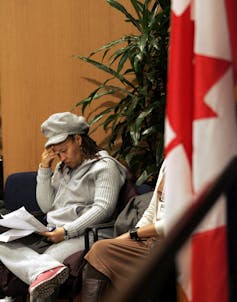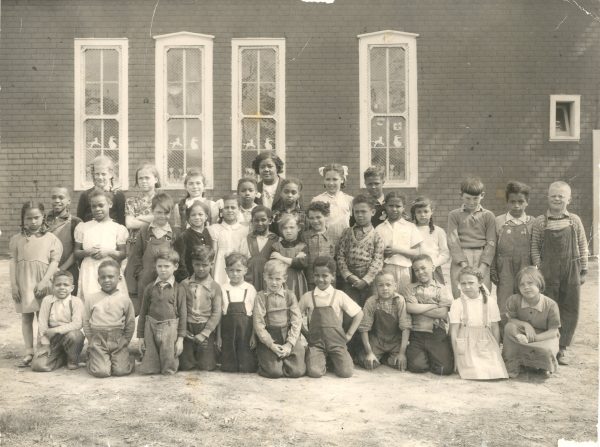Toronto’s Africentric Alternative School first opened in 2009 after years of advocacy and then months of heated public debates and criticism about the meaning and significance of the school.
For some, the school represented a push towards equitable schooling practices within an education system that largely left Black students disengaged. For others, the school represented a newer, more modern form of segregation disconnected from the multicultural learning practices promoted throughout Ontario schools.
The assumption here was that Ontario always had equitable and open schools. Many argued that separate institutions (especially those that considered the intersections of race and educational access) were not reflective of the inclusive education that Canada encouraged.
However, what many Canadians do not know is that the province has a long and complex history with separate schooling beginning with the creation of public school systems in the province. In fact, racism and segregation remain embedded in the institutional fabric of formal schooling systems across Canada.

Exclusionary practice became policy
When I first began researching Black women teachers in Canada for my book Schooling the System: A History of Black Women Teachers, I was struck by how many women in the early 19th century worked in separate schools providing education to Black students.
I soon discovered that most of these women were unable to gain employment in public school systems as a result of discriminatory hiring practices that funnelled them into predominately Black schools. These schools were created as a result of a series of exclusionary social practices, but were later supported through formal educational policy.
The Common School Act of 1850 set into law what was already being practised by local communities throughout Ontario. The act permitted any group of five Black families to ask local school trustees to establish a separate school. The law also permitted the creation of separate schools for Roman Catholic and Protestant families.
While the act was intended to allow for freedom of choice in various communities, it gave many racial separatists the ammunition they needed to enforce racial segregation.
In various areas, white community members used the act as a way to force Black students into separate institutions. These individuals refused to allow Black pupils into public (then called common) schools and justified this by using the 1850 Act.
Black children isolated, turned away
While there were occasions where Black children were permitted into common schools, they were often forced to sit on separate benches or isolated within these classroom spaces. More often than not, Black children were not allowed into common schools and were required to attend separate Black institutions. As a result, the passage of the Common School Act of 1850 further entrenched Black students into substandard facilities throughout Ontario and often forced Black Canadian community members to create their own separate schools or use facilities provided to them by local trustees.
While the Common School Act of 1850 was intended to create equal education among racial and religious groups, expectations fell short of the ideal. Race-based separate schools flourished in Niagara, St. Catharines, Dresden, Simcoe, Chatham, Buxton, Sandwich, Gosfield, Mulden, Anderdon and Colchester, where the last segregated school closed in 1965, over ten years after the historic Brown vs. Board of Education of Topeka case was won in the United States.
In the U.S., as a result of Brown vs. Board of Ed., many Black teachers lost their jobs, and were often unable to access positions in public boards. In Canada, similar but unacknowledged forms of racial prejudice ensured that Black educators could not gain access to public school systems until the middle of the 20th century.
When Black schools did open, Black community members and teachers ensured these schools were also open to students of all races.
Scholar Alison Norman who has researched school teachers at Six Nations of the Grand River has examined the history of Black educators who taught at Six Nations, including generations of the Alexander family. These Black and Indigenous educators collaborated to preserve cultural and community ties. In my scholarship, I am just beginning to examine points of convergence among Black and Indigenous communities, asking how they experienced different but connected models of separate schooling.
Some institutions, such as the Buxton Mission school, developed elite learning programs for Black and white students alike. Buxton was one of the only separate schools offering classical training (with a focus on Latin, Greek, mathematics, theology, history and geography). The school prepared many Black students for university in Canada and the United States.
Gerrymandering school districts
Despite the existence of integrated schools like the Buxton Mission school, the 1850 Common School Act revealed uneven institutional supports for Black students. In Charlotteville, Ont., school district lines were gerrymandered to prevent Black students from attending public schools in the area. Historian Robin Winks describes this as the “first and possibly most important court action involving attempts to segregate Negro pupils.”
Local trustees often struggled to find certified educators to teach Black children and many schools lacked the resources to meet provincial guidelines.
By the time Wilson Brooks was hired as the first Black educator in a Toronto public school in 1952, Black students continued to face challenges in public schools as a direct consequence of these historical exclusions.
The continuities of racial discrimination in Ontario’s education system remained pervasive into the 21st century as Black students faced limited access to equitable learning outcomes in Ontario schools.
Black educators, meanwhile, faced isolation and discrimination, while also creating strategies and practices of resistance.
Ongoing realities of racial injustice
In the 2017 report, Towards Race Equity in Education, researchers discovered that in comparison to white and other racialized students, Black students were less likely to be enrolled in academic streams in Toronto schools. In addition, Black students were twice as likely to drop out of school than other students. Black students were also under-represented in gifted programming and over-represented in basic-level programming throughout Ontario schools.
All of this meant that despite a growing push towards diverse education models in Ontario schools, curricula and teaching practices have been unable to create inclusive learning spaces for Black students. That responsibility has often been left to the few Black teachers within Ontario schools, or community activists pushing for programming to address Black student engagement.
Recently, parents of children attending the Africentric Alternative School launched a petition after discovering that virtual learning would be unavailable to students at the school during the COVID-19 pandemic. While most Toronto District School Board institutions created options for online learning during the pandemic, this option was not available for alternative schools, leading to calls to action by community members. In addition, fluctuating enrolment at the school has led to increasing funding restrictions reminiscent of the separate schools of the 1850s.
The current debates surrounding Black access to education reflect the realities of racial injustice embedded in our schools. Ultimately, the Common School Act of 1850 was one of many policies that left Black students disadvantaged throughout Canadian school systems.![]()
Funké Aladejebi is an Assistant Professor at the Department of History, University of Toronto.
This article is republished from The Conversation under a Creative Commons license. Read the original article.


